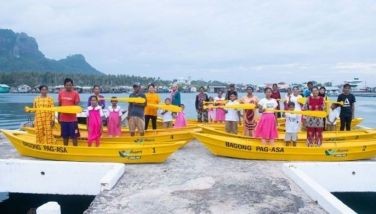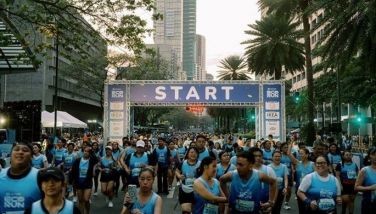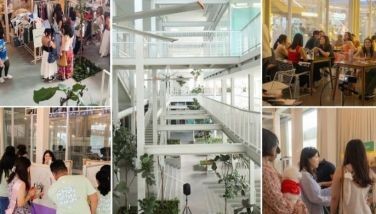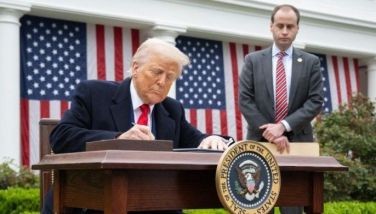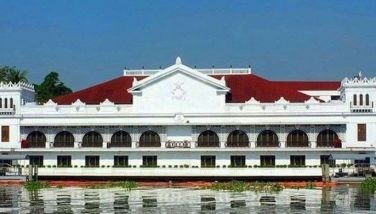Desperate for tourists

A number of Southeast Asian countries are diligently working out protocols for inbound tourist travel to resume despite still relatively high new COVID-19 rate infections. This just shows how desperate their economies rely on tourism.
In 2019, before the pandemic struck, tourism for the region was estimated at about $400 billion, representing approximately 12 percent of GDP. Thailand and Cambodia enjoyed immense popularity among its biggest markets: China, Singapore and South Korea.
Efforts are underway to bring tourists back, with Thailand leading the way through a quarantine-free vacation program called the Phuket Sandbox that reeled off last July. After a two-month period, Thailand reported $48.7 million in revenues and attracted some 40,000 international arrivals.
While revenues from this experimental travel bubble involving Phuket, a popular resort island, is far smaller compared to pre-pandemic records, it has been successful in curbing transmittal of the virus from foreign visitors to local residents, with only as little as a 0.3 positivity rate reported.
All tourism workers and 85 percent of the Phuket’s population are vaccinated against COVID-19, which adds a level of assurance for the Thai government in keeping its mainland population safe from the virus.
The Phuket Sandbox experiment has been popular with foreign visitors not just because it allows entry to the island without days-long quarantine restrictions, but also permits them to go almost anywhere in Thailand after spending a 14-day holiday vacation stay in Phuket.
Sandbox scheme variations
Other Southeast Asian countries desperate for their tourism business to recover are likewise adopting similar protocols as Phuket’s although suited to local conditions like vaccination rates, border controls, and overall government restrictions.
The vacation island of Phu Quoc in Vietnam, for example, is geared up to open to fully inoculated tourists from the U.S., Europe, and Australia by Nov. 20 after all the island residents will be fully vaccinated by the end of October.
Vietnam is organizing chartered flights for foreign tourists to enjoy a vacation of golf, sight seeing, diving, sun bathing, and other preferred activities – but in selected destinations closely supervised by tour agencies.
The more cautious approach by Vietnam is a result of several incidents that have been traced to scattered outbreaks of the virus, and the Phu Quoc travel bubble is the learning culmination of all past mistakes.
Vietnam, like Thailand, have abandoned the zero COVID line that relies primarily on contact tracing and isolation, and instead is pursuing a goal to vaccinate enough of its population to induce herd immunity. Both countries are rushing vaccinations, but are hampered by scarcity of supply.
Bali in Indonesia had been one of the first tourist destinations in Southeast Asia that wanted reopen to foreign tourists, but the continued requirement of a five-day quarantine have put off reservations by interested holiday travellers.
A number of other inconveniences have also discouraged tourists from visiting: the island is allowing tourists from only 19 countries; there are still no international flights allowed direct to Bali; and visa requirements are patchy.
Because of its geographic size, movement of tourists within Bali is also difficult to contain. It is more than 10 times the size of Phuket and Phu Quoc, although the Indonesian government boasts of a vaccination rate of 80 percent for the whole population.
Domestic tourism
Bali is mainly surviving today from its domestic tourism, but this is not enough to sustain the island economy for long. More than 90,000 people in Bali’s hospitality industry have lost their jobs since the country closed its borders, and hotel occupancy in the island dropped below 20 percent.
Malaysia is planning to adopt measures that Thailand has successfully employed in the islands of Phuket and Samui, but is taking a more conservative approach by limiting entry in its Lankawi to fully vaccinated domestic holiday seekers from the mainland.
The Philippines’ Department of Tourism (DOT) has likewise opened its famous tourist islands of Boracay and Panglao to locals who showed full vaccination proof, although it is preparing to open to foreign visitors when 100 percent of their population is vaccinated.
How this will happen for foreign tourists is not clear yet, since the IATF still imposes a cumbersome seven-day quarantine in a government-designated quarantine hotel for vaccinated tourists showing proof of vaccination. What’s the point of quarantines when one is fully vaccinated?
Making up for lost travel time
The DOT claims that the tourism industry pre-pandemic contributed $50.2 billion to the economy, corresponding to about 13 percent of GDP. This had dropped to $19.5 billion last year as tourist arrivals plummeted from 8.25 million in 2019 to just 1.48 million in 2020.
With more talk of the pandemic de-escalating into an endemic soon, certified travel enthusiasts have started bringing out their passports and going over long-shelved plans of an extended overseas holiday. What is certain is that there will be a resurgence of pleasure travel soon, and the country that can offer the best terms and conveniences will herd them all.
Will the DOT be able to replicate the highly successful Phuket Sandbox formula and take advantage of this impending global travel itch? Or will it be able to come up with a more attractive package catering to those coming from the U.S., which still is its major market for inbound tourism?
For sure, it will be a crazy competitive marketplace for the world’s tourism industry as more travel restrictions are lifted and as countries desperate for tourism incomes jockey for business opportunities lost during the pandemic. Will the Philippines be ready for this?
Facebook and Twitter
We are actively using two social networking websites to reach out more often and even interact with and engage our readers, friends and colleagues in the various areas of interest that I tackle in my column. Please like us on www.facebook.com/ReyGamboa and follow us on www.twitter.com/ReyGamboa.
Should you wish to share any insights, write me at Link Edge, 25th Floor, 139 Corporate Center, Valero Street, Salcedo Village, 1227 Makati City. Or e-mail me at reydgamboa@yahoo.com. For a compilation of previous articles, visit www.BizlinksPhilippines.net.
- Latest
- Trending














